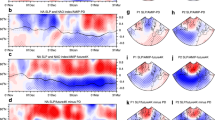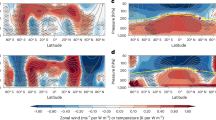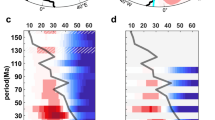Abstract
Vik et al. question whether we documented spatial synchrony between caribou and musk oxen from Greenland, and whether spatial synchrony within each species related to the North Atlantic Oscillation (NAO)1. Attributing spatial synchrony to climate is difficult but possible2, and the questions raised by Vik et al. are readily addressed. Contrary to their incorrect statement of our definition of the NAO effect ratio1, a strong climatic effect on any pair of populations is not a requisite of climate-induced synchrony. As Moran3 argued, and as our analysis illustrated1, populations may be synchronized if climate influences each of them similarly, regardless of the magnitude of that influence. Moreover, the standardized NAO effect ratio is associated statistically with the degree of climatic correlation across populations4 and hence the degree of synchrony between populations3.
This is a preview of subscription content, access via your institution
Access options
Subscribe to this journal
Receive 51 print issues and online access
$199.00 per year
only $3.90 per issue
Buy this article
- Purchase on SpringerLink
- Instant access to full article PDF
Prices may be subject to local taxes which are calculated during checkout

Similar content being viewed by others
References
Post, E. & Forchhammer, M. C. Nature 420, 168–171 (2002).
Cattadori, I. M., Merler, S., & Hudson, P. J. J. Anim. Ecol. 69, 620–638 (2000).
Moran, P. A. P. Aust. J. Zool. 1, 291–298 (1953).
Sokal, R. R. & Rohlf, F. J. Biometry: The Principles and Practice of Statistics in Biological Research (Freeman, New York, 1995).
Holyoak, M. & Lawler, S. P. J. Anim. Ecol. 65, 640–652 (1996).
Ims, R. A. & Steen, H. Oikos 57, 381–387 (1990).
Buonaccorsi, J. P. et al. J. Theor. Biol. 224, 107–114 (2003).
Forchhammer, M. C. & Boertmann, D. M. Ecography 16, 299–308 (1993).
Koenig, W. D. & Knopps, J. M. H. Am. Nat. 155, 59–69 (2000).
Wallis, W. A. & Roberts, H. V. Statistics: A New Approach (Free, New York, 1956).
Author information
Authors and Affiliations
Corresponding author
Rights and permissions
About this article
Cite this article
Post, E., Forchhammer, M. Living in synchrony on Greenland coasts?. Nature 427, 698 (2004). https://doi.org/10.1038/427698a
Issue date:
DOI: https://doi.org/10.1038/427698a



